Workhuman Live 2025: Architecting the Future of Work with Data and Bold Decisions
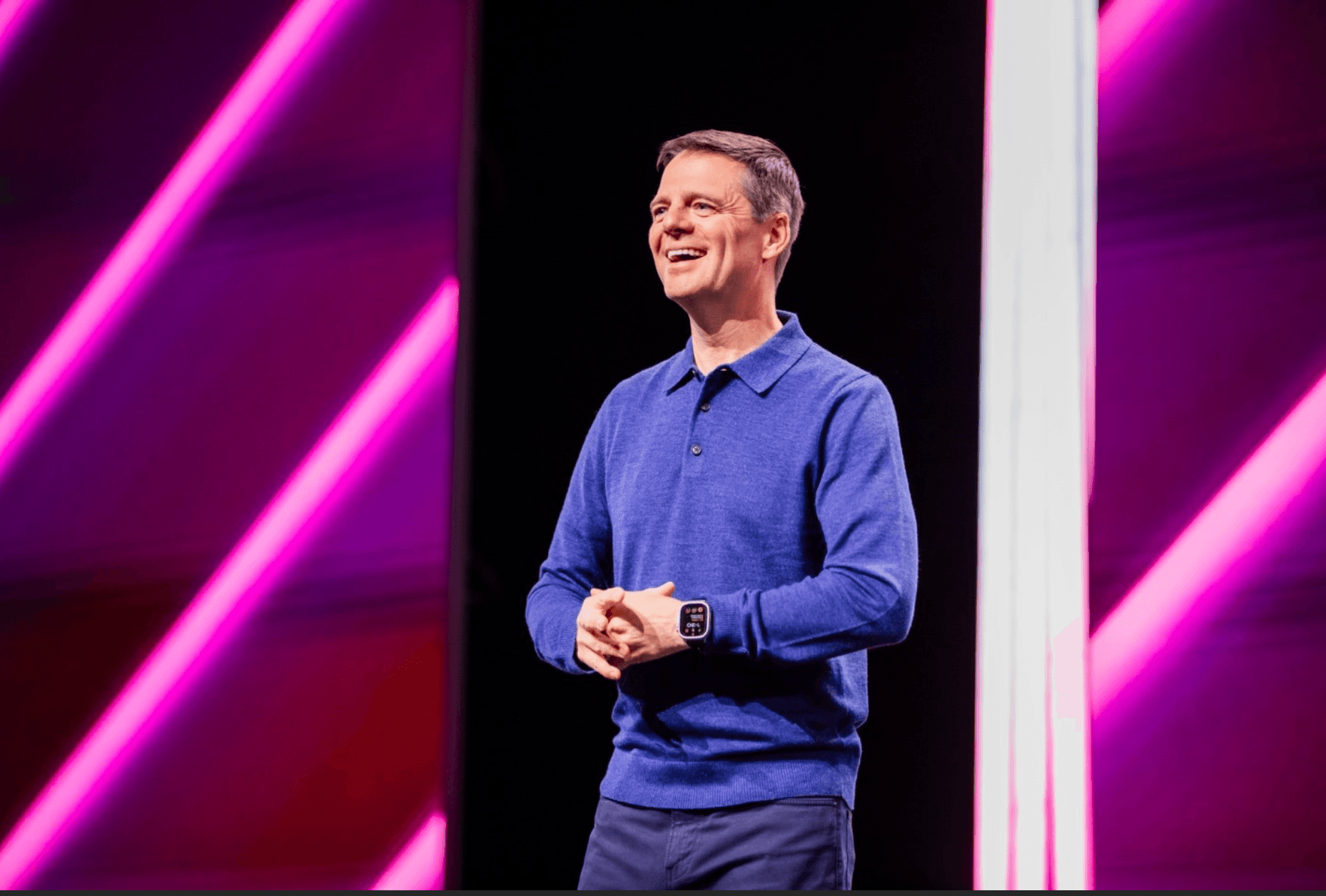
There’s no shortage of interest in AI right now – especially in HR.
According to Gallup, 93% of CHROsOpens in a new tab say their organization has begun using AI to improve business practices. Nearly everyone sees the opportunity to move faster, make better decisions, and improve the employee experience.
But here’s where many leaders get stuck: not in the technology itself, or even in the questions they are asking, but in the data AI is drawing from. Despite having more data than ever, much of it is fragmented, transactional, incomplete, or not designed to reflect how work really happens.
That’s what I spoke about during this year’s keynote at Workhuman Live 2025Opens in a new tab in Denver. AI is moving fast, but without a human-centered data foundation, we risk building on noise. If we want AI to help us lead more boldly and more fairly, we need better inputs: data that reflects the real-time truth about how people contribute, collaborate, and live our values at scale. AI is only as powerful as the data it’s trained on.
I realize that talking about AI has become practically mandatory at conferences, but examining this intersection between AI and HR is an important conversation. As people leaders race to implement the latest technology, it’s critical that humans aren’t lost in the mix.
Last year, the RAND Corporation released a reportOpens in a new tab that found more than 80% of AI projects fail, wasting billions of dollars in capital and resources. The reason? Bad data. Organizations simply don’t have the right data to train effective AI models.
You’ve no doubt seen the headlines: “Bigger AI chatbots more inclined to spew nonsense” and “flawed data ranked as top AI risk.”
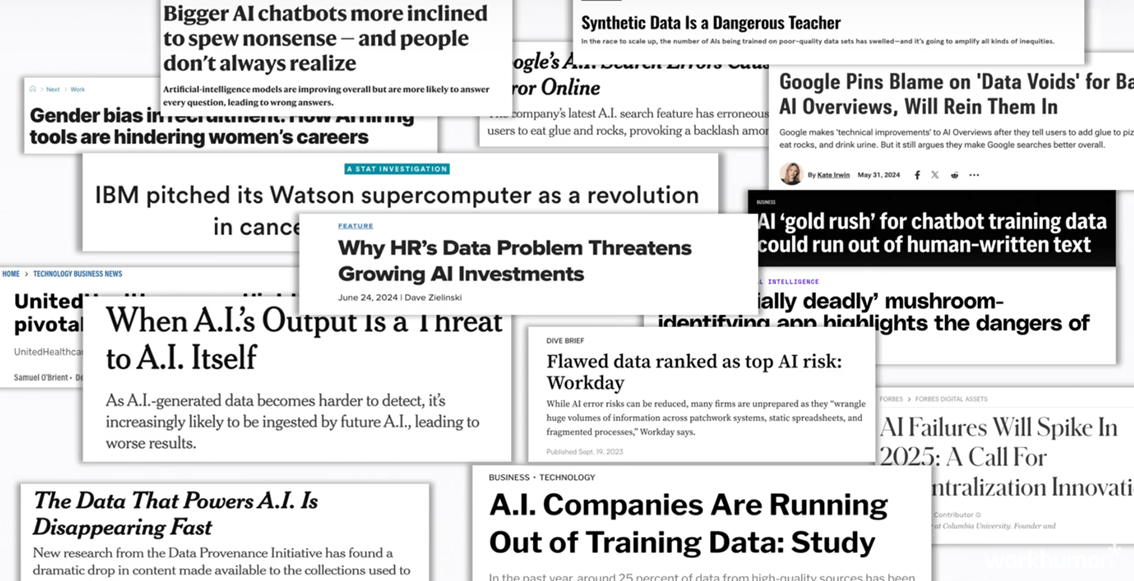
So, how do we move forward with AI and find people data that’s thoughtful, and helps us to build the best and most effective human experience of work? These are the questions we tackled in Denver last week.
What can we learn from a recognition moment?
It’s one thing to talk about the importance of data in the pursuit of AI excellence. It’s quite another to show what it looks like in practice.
In my keynote this year, we approached the conversation a bit differently. Instead of just talking about the combination of AI and people data, we looked at it through the lens of something deeply human: a single recognition moment drawn from our own Spark recognition program – and all the rich information it contains.
Employee recognition is an incredible way to connect and engage employees, and it can be a catalyst for driving higher performance and bottom-line impact. With the addition of AI, it offers a density of data that offers valuable insight into who your people are and how work is getting done across your organization.
You can see who collaborates with whom, who drives impact, who builds trust, and who makes a difference, as seen by the people they work with every day.
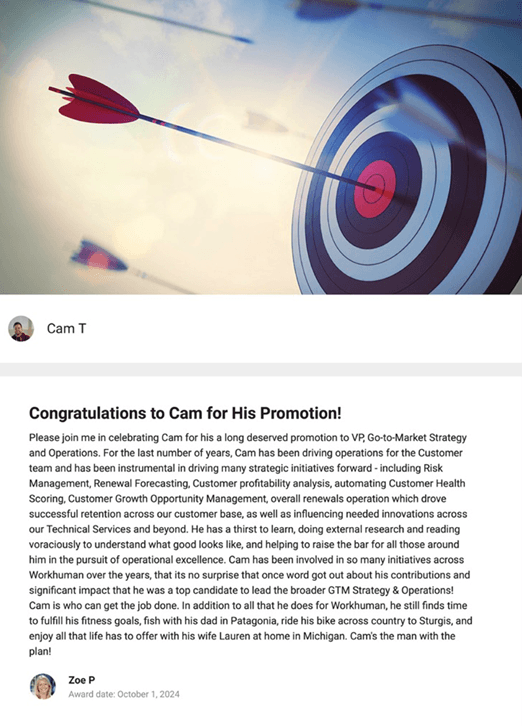
As we read the comments and congratulations on Cam's award, a story began to unfold. Words like dedication, natural leader, and strategic mind came up again and again.
In isolation, these comments may seem anecdotal. But, when they are layered across dozens of awards given over time, they form a pattern, building a more meaningful profile of who the individual is based on their contributions and their attributes, as seen by not just one person but by everyone across the organization.
This kind of truth is what makes recognition data so powerful, and so unique. Using thousands of recognition moments, AI can do what humans alone cannot: surface hidden insights, and guide better, more fair decisions.
Of course, this only works if the data is real, rich, and human. Because without the right data foundation, AI is just a house of cards.
What are the flaws in AI?
It’s tempting to think of AI as a silver bullet. “Don’t panic: AI will fix everything,” is the mantra. But the problem is it can’t fix anything if it’s trained on narrow, inaccurate, or biased data. Instead, it begins to hallucinate.
Some hallucinations are comical: “Show an image of a wholesome laugh with man’s best friend.”

And some are flat-out wrong: “Show vanilla ice cream.”

Of course, AI isn’t trying to be funny, here. It simply lacks good data. It doesn’t understand relationships, emotions, or context. It’s mashing together pixels based on probabilities.
But what’s entertaining in slides becomes much more serious when AI is used to make real people decisions– like who gets hired or flagged across the organization as a “low performer.” If a manager has a completely wrong opinion about an employee, and they’re the only data source, you risk drawing the wrong conclusions – and making decisions that hurt people and business results.
How does high-quality people data help?
All AI systems – LLMs, SLMs, neural networks, machine learning, etc. – must get their knowledge off a training set. But if the training data is even a little bit corrupt, if there’s not enough of it, or if it’s inaccurate, the whole house of cards falls. The technologies in the middle are not intelligent.
When you create harmony between the technologies that underpin AI systems and the data generated by real human beings, the intelligent output of your AI systems goes up.
Let’s look at an example:

Suppose the team in this image worked on launching a new product. If you were to ask each member of the team who made the project a success, they’d probably mention the person standing. Our brains are hard-wired to veer toward the most dominant person in the room (in this instance, the manager).
But when you have an AI system trained on all the actions, victories, and little steps along the way of that year-long project, the data tells a different story. You could ask “Who was the most influential person in last year’s product launch?” and the answer might surprise you. It may be the administrative assistant at the back. The glue that held the project together.
When AI is trained on all recognition messages across the project's lifecycle – expressed by the team members working on it – it gives you a more complete picture. That’s Human Intelligence.
What is the power of Human Intelligence?
And this is exactly what Workhuman’s breakthrough Human Intelligence™ does. The industry-first combination of AI SaaS and recognition data, Human Intelligence lets AI finally deliver on its promise. It delivers deep insights into your people and your culture, directly to your managers and employees.
Think of it like this. Here is a map of the collective intelligence of your organization.
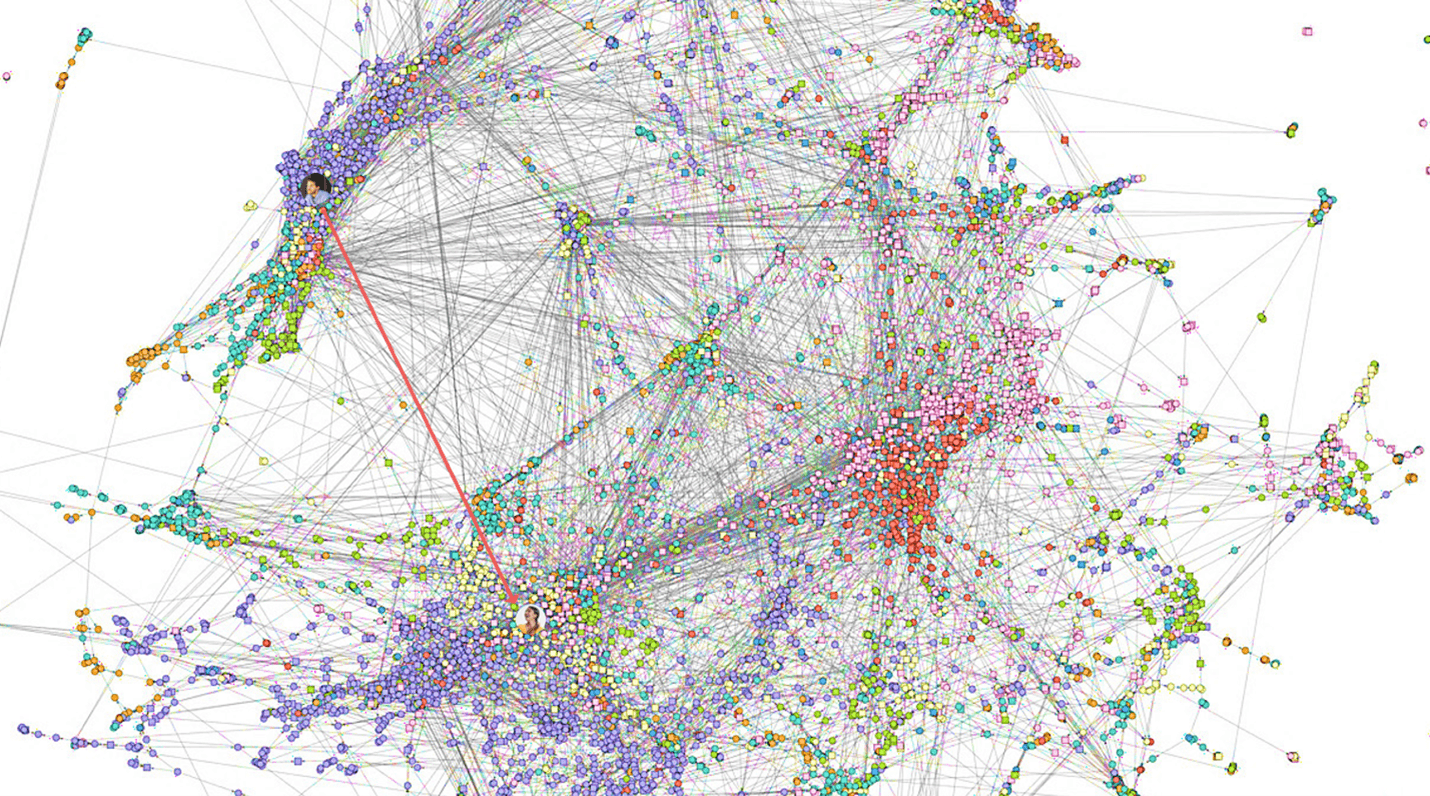
This is a data visualization of a Workhuman customer’s recognition program. In the graph, each dot is a person color coded for their department – and each line between the people is a recognition award.
As you can see, there are tens of thousands of awards, and each one is rich with information density that contributes to the collective intelligence of the organization.
And it’s all available at your fingertips.
Human Intelligence is built around a single goal: helping leaders make better, more human decisions. Onstage at Workhuman Live, I talked about the suite of Human Intelligence tools that we’ve developed, to turn recognition data into business intelligence, including:
Culture Hub: A reimagined homepage for the whole recognition platform. Tailored to the individual employee, the Culture Hub provides a place for awards to be featured dynamically, for maximum impact to the employee.
AI Assistant: Workhuman’s premier AI innovation, which uses the world’s first recognition-specific language model to answer direct prompts in real time: “What skills are emerging in my department?” or “Who are my top contributors over the last quarter?” Leaders don’t have to wait for reports, dashboards, or HR analysis to understand their workforce.
Recognition Advisor: A powerful, AI-driven coach (think: a cheerleader for good recognition) that helps employees create better, more meaningful, and more impactful recognition.
Reward Stories: Feel-good stories directly from employees about ways they’ve redeemed their awards, creating a self-sustaining cycle of recognition across the organization and building more data to fuel Human Intelligence.
Workhuman iQ Snapshots: Insights embedded directly into the recognition experience, democratizing data on retention risk, skills, and behaviors and providing managers with information previously locked away in HR systems.
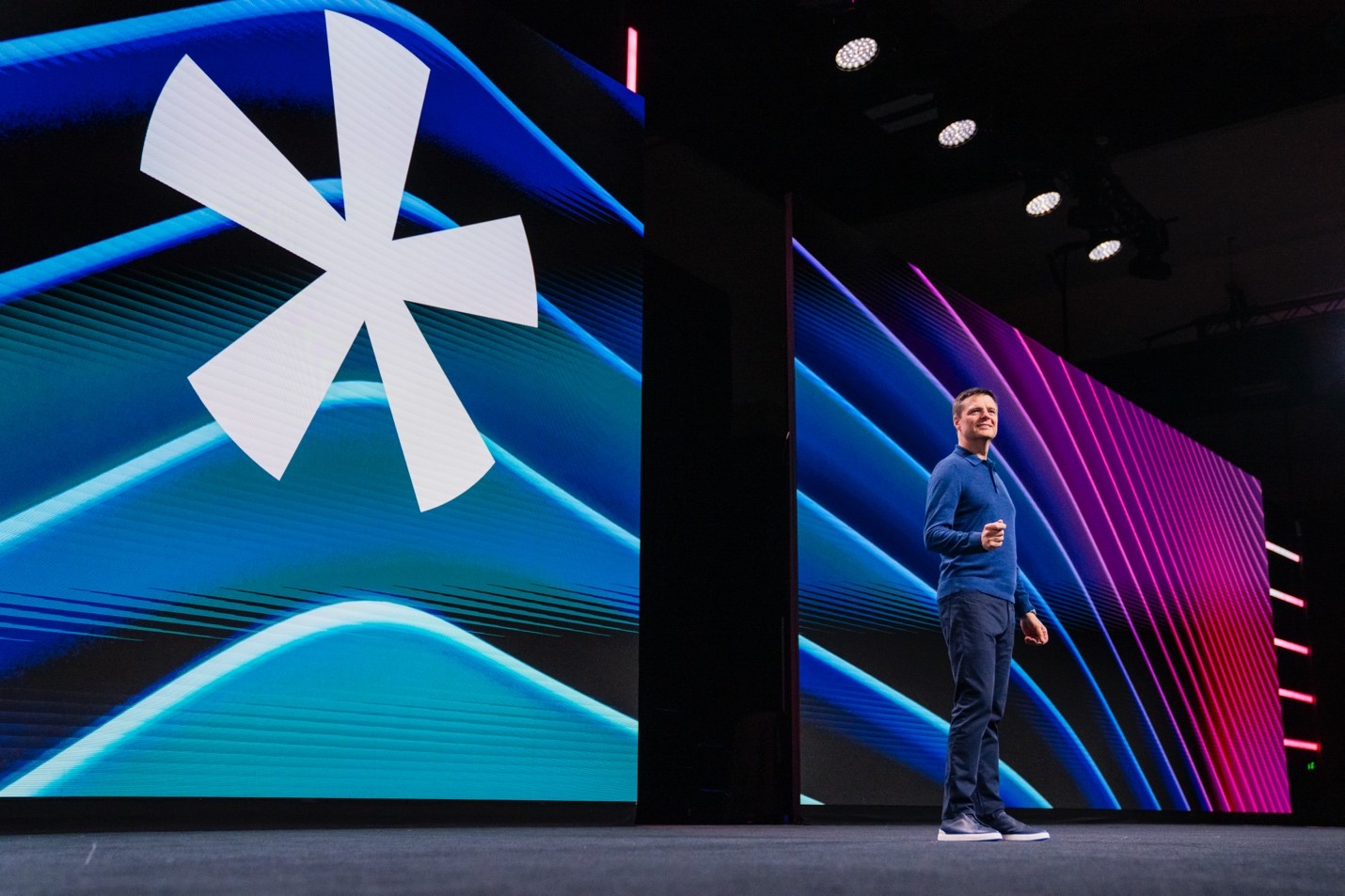
We also introduced Workhuman Topics™ during my keynote address. Topics allow leaders to create initiatives and rally cries to turn recognition moments into a living, breathing map of how strategic priorities like inclusion, innovation, and leadership behaviors show up in workplace culture.
Closing thoughts
In an era defined by AI and automation, Workhuman is championing a new path forward, where HR leads with purpose, clarity, and the power of recognition done right.
Having the right data will empower us all to shape the next era of HR, where appreciation fuels performance, culture becomes a strategic advantage, and human intelligence is the catalyst for lasting growth. We can’t wait to continue the momentum at Workhuman Live 2026Opens in a new tab, April 27 – 30 in Orlando.
For more insights into Workhuman Live 2025 and what we learned there, read my latest Forbes articleOpens in a new tab.
About the author
Eric Mosley
Eric Mosley is a visionary leader, author, speaker, and the driving force behind the Workhuman® movement, which focuses on transforming work through human connection and AI-powered recognition. As the founder and CEO of Workhuman, he has spent more than two decades pioneering a more human-centric approach to work, demonstrating how recognition, connection, and purpose fuel organizational success.
A global thought leader on the intersection of technology and humanity, Eric challenges traditional HR frameworks and advocates for a future where AI and emerging technologies amplify human potential. His work especially explores how organizations can harness the collective intelligence of their people, using recognition data and social insights to build thriving, inclusive workplaces.
Eric is a trusted advisor to some of the world’s most influential Fortune 500 organizations, guiding leaders on how to create workplaces that prioritize belonging, wellbeing, and human connection. He is also the pioneer of Human Intelligence™, Workhuman’s revolutionary approach to using real-time recognition data and behavioral insights to shape modern leadership and workplace culture. By capturing and analyzing organic moments of appreciation and collaboration from the Workhuman Cloud, Human Intelligence gives leaders deep insights into performance and culture that help them make more informed, ethical, and impactful workforce decisions.
A sought-after speaker, Eric has shared his insights on global stages, including Davos, Web Summit, AWS, and Workhuman Live. He is the author of "The Crowdsourced Performance Review" and award-winning co-author of "The Power of Thanks" and "Making Work Human". A frequent contributor to Forbes, his byline has also appeared in Fast Company, Harvard Business Review, The Huffington Post, Inc., and other leading publications, shaping the conversation on AI, leadership, and the evolving workplace.